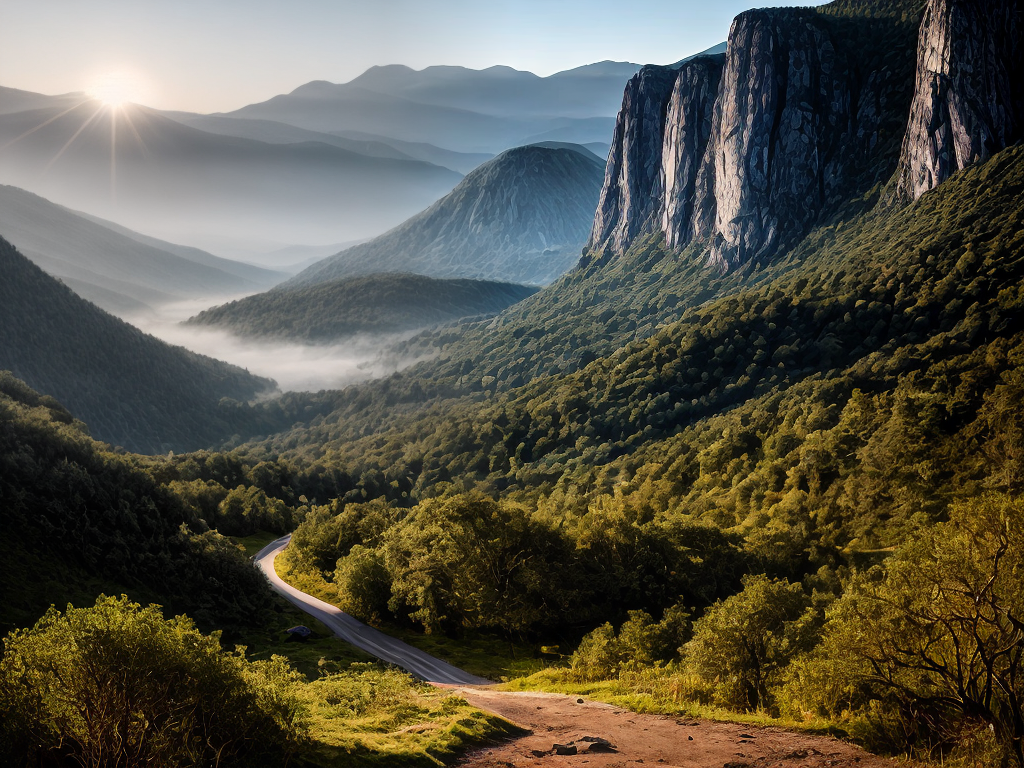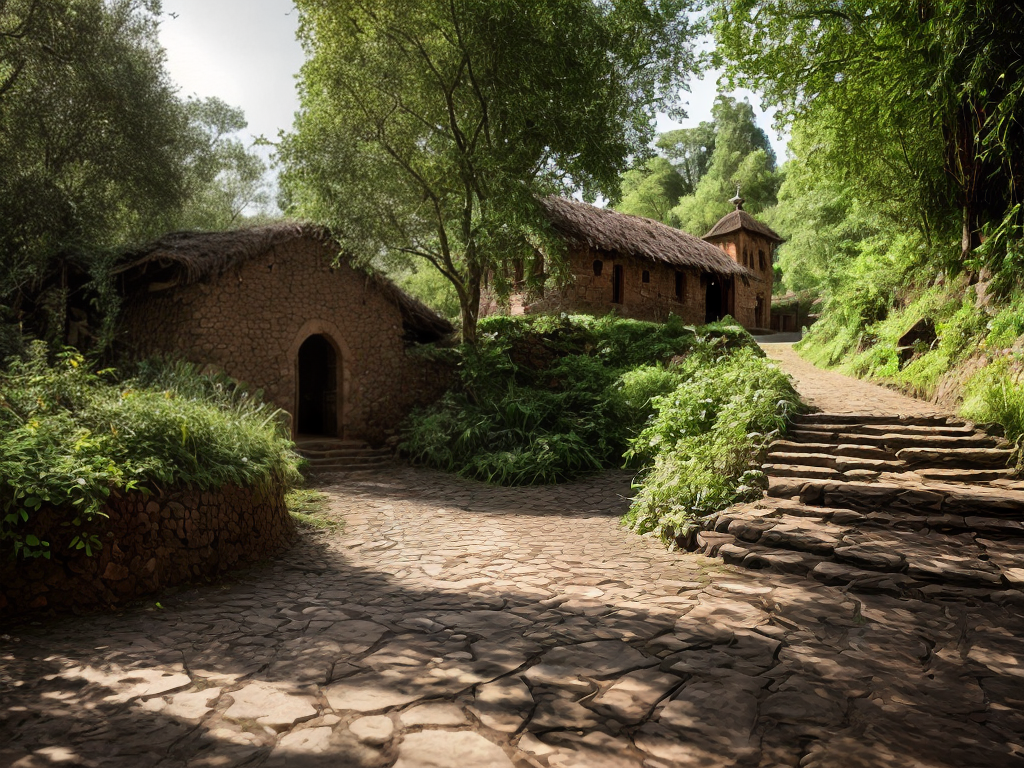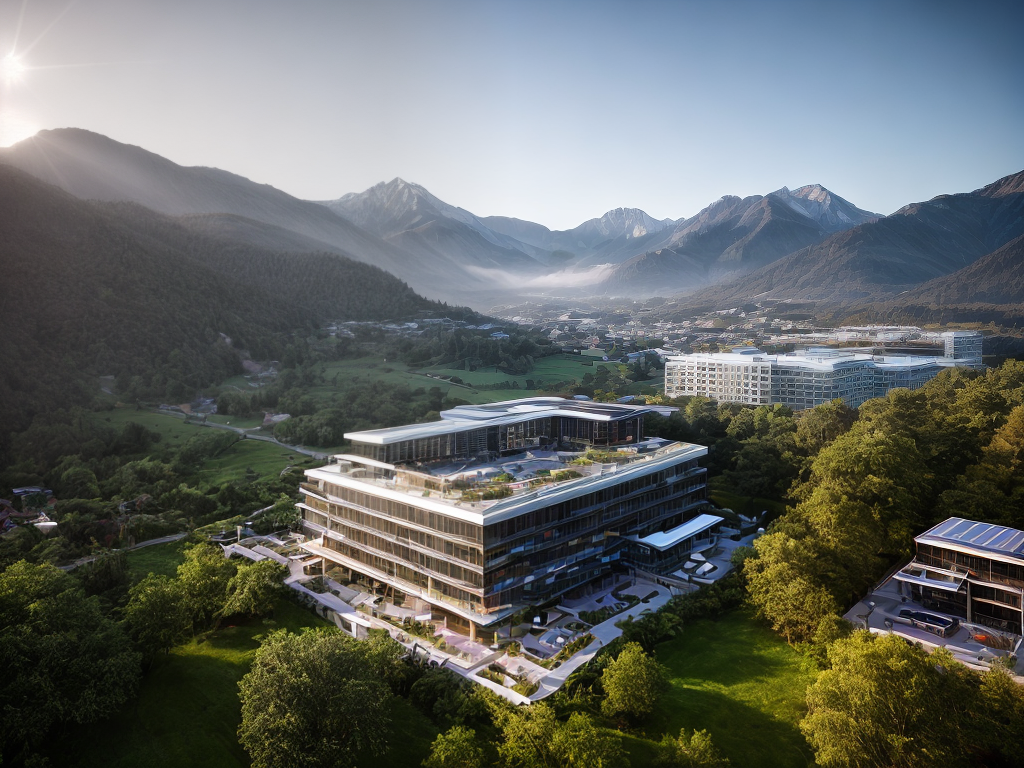So, you think you’ve seen the night sky. Well, let me tell you, my friend, you haven’t truly experienced celestial wonders until you’ve indulged in a night of stargazing at Mountain View Hotel. Nestled in the heart of the mountains, this enchanting retreat offers an ideal location for observing the cosmos in all its glory. With breathtaking views, minimal light pollution, and a plethora of celestial events, it’s no wonder that stargazers from far and wide flock to this haven. But before we delve into the wonders that await, let me pique your curiosity and leave you yearning for more.
Ideal Location for Stargazing
The ideal location for stargazing at Mountain View Hotel is a secluded spot away from city lights and with minimal light pollution. Finding such a spot is crucial for a truly immersive stargazing experience. When you escape the glow of urban areas and venture into the darkness, you open yourself up to a world of celestial wonders.
By choosing a secluded spot, you are ensuring that you have the best chance to observe the beauty of the night sky. Away from the distractions and hustle of city life, you can fully immerse yourself in the stillness and vastness of the universe. The benefits of starry nights are numerous, from the sheer awe and wonder they inspire to the opportunity for introspection and reflection.
Light pollution is a significant factor that can impact the quality of stargazing. It refers to the excessive or misdirected artificial light that brightens the night sky. This interference can wash out the stars, making them difficult to see and appreciate. By choosing a location with minimal light pollution, you can ensure that you have a clear and unobstructed view of the night sky, allowing you to fully appreciate the intricacies of the stars, planets, and constellations above.
At Mountain View Hotel, we understand the importance of providing an intimate experience for our guests. That’s why we have carefully selected a secluded spot that offers minimal light pollution, allowing you to immerse yourself in the beauty of the night sky. Whether you’re a seasoned stargazer or new to the wonders of the universe, our ideal location ensures that you have the best opportunity to connect with the cosmos and create lasting memories.
Breathtaking Views of the Night Sky
Having found the ideal secluded spot with minimal light pollution, I couldn’t help but marvel at the breathtaking views of the night sky at Mountain View Hotel. The combination of the hotel’s remote location and careful attention to keeping light pollution to a minimum creates an unparalleled experience for stargazers. Here are four reasons why the night sky at Mountain View Hotel is truly awe-inspiring:
-
Unobstructed Visibility: With minimal light pollution, the night sky at Mountain View Hotel offers unobstructed visibility of celestial wonders. The absence of city lights allows for a clear and vivid view of stars, planets, and even distant galaxies.
-
Shooting Star Spectacle: The dark sky at Mountain View Hotel provides the perfect backdrop for capturing stunning night sky photos. The absence of light pollution enhances the visibility of shooting stars, making it an ideal spot for astrophotography enthusiasts to capture those elusive moments.
-
Milky Way Magic: The remote location of the hotel allows guests to witness the magnificence of the Milky Way in all its glory. The band of stars, dust, and gas stretches across the sky, creating a captivating display that is often missed in urban areas.
-
Constellation Clarity: At Mountain View Hotel, the lack of light pollution enables visitors to easily identify and appreciate constellations. With the naked eye or a telescope, guests can trace the patterns of ancient myths and legends, feeling a sense of connection to the vastness of the universe.
Benefits of Minimal Light Pollution
As an avid stargazer, I can attest to the benefits of minimal light pollution. When the skies are dark, it allows for optimal stargazing and a clear view of constellations. Without the interference of artificial light, the stars shine brighter and their intricate patterns become more visible. The absence of light pollution enhances the overall stargazing experience, making it truly awe-inspiring.
Dark Skies Promote Stargazing
How does the absence of excessive artificial light enhance the experience of stargazing? When the night sky is free from the impact of light pollution, stargazing becomes a truly awe-inspiring experience. Here are four ways in which minimal light pollution promotes the enjoyment of observing the stars:
-
Visibility: Without the glare of artificial lights, the night sky becomes clearer, allowing us to see more stars and celestial objects with greater detail.
-
Colors and Contrast: With minimal light pollution, the colors of the stars and galaxies become more vibrant, and the contrast between dark and bright objects in the sky becomes more pronounced.
-
Milky Way Visibility: In ideal stargazing spots with minimal light pollution, it is possible to witness the breathtaking beauty of the Milky Way galaxy stretching across the night sky, an awe-inspiring sight that is often obscured by light pollution.
-
Deep Sky Observations: Minimal light pollution allows for better visibility of deep sky objects such as nebulae, star clusters, and galaxies, offering stargazers the opportunity to delve into the mysteries of the universe.
Clear Views of Constellations
The absence of excessive artificial light not only enhances the experience of stargazing but also provides clear views of constellations, allowing for a deeper appreciation of the night sky. At Mountain View Hotel, we offer ideal stargazing conditions with minimal light pollution, ensuring that you can witness the celestial wonders in all their glory. With the unobstructed views of the constellations, you can indulge in the beauty of the night sky and explore the vastness of the universe. Our knowledgeable staff will be more than happy to assist you in celestial navigation techniques, helping you identify and locate various constellations. Whether you are a seasoned stargazer or a beginner, our clear views of constellations will make your stargazing experience truly memorable.
Best Time for Stargazing at Mountain View Hotel
The optimal time for stargazing at Mountain View Hotel is during clear nights when the sky is devoid of light pollution. To ensure the best stargazing experience, it is important to consider the ideal weather conditions and moon phases. Here are a few tips to make the most of your stargazing experience at Mountain View Hotel:
-
Choose a night with clear weather: Cloudy or hazy skies can hinder visibility and make it difficult to observe celestial objects. Check the weather forecast beforehand and plan your stargazing excursion on a night with clear skies.
-
Avoid nights with a bright moon: The moon emits its own light, which can wash out the fainter stars and make it harder to see celestial objects. Opt for nights when the moon is in its crescent or new moon phase, as these phases provide darker skies and enhance visibility.
-
Time your stargazing session: The best time for stargazing is usually after sunset and before sunrise, when the sky is at its darkest. During this time, stars, planets, and other celestial objects are more visible against the backdrop of the night sky.
-
Be patient and allow your eyes to adjust: Stargazing requires patience and dark adaptation. Allow your eyes to adjust to the darkness by avoiding bright lights and giving yourself at least 20 minutes for your eyes to fully adapt.
Must-Have Equipment for Stargazing
To enhance your stargazing experience at Mountain View Hotel, it is essential to have the right equipment. The ideal equipment for stargazing includes a telescope, binoculars, a star chart, and a red flashlight.
A telescope is the most important tool for stargazing. It allows you to see distant celestial objects in great detail. Look for a telescope with a large aperture to capture more light and provide clearer images. A tripod is also necessary to keep the telescope steady and prevent shaking.
Binoculars are another essential gear for stargazing. They provide a wider field of view, making it easier to locate and observe celestial objects. Opt for binoculars with a high magnification power, such as 10×50 or 12×50, to get a closer look at the stars and planets.
A star chart is a map of the night sky that helps you identify constellations, stars, and other celestial objects. It is a useful tool for navigating the sky and finding specific objects. Consider using a smartphone app or a printed star chart for convenience.
Lastly, a red flashlight is crucial for preserving your night vision. Unlike white light, red light does not disrupt your eyes’ ability to adapt to the darkness. This allows you to see fainter stars and details in the night sky. Make sure to cover the flashlight with a red filter or use a dedicated red LED flashlight.
Spotting Constellations at the Hotel
Using a star chart and the right equipment, I can easily spot constellations at the Mountain View Hotel. The hotel’s location, away from the city lights, provides ideal weather conditions for stargazing. Here are four tips to help you identify different star patterns during your stay:
-
Familiarize yourself with the constellations: Before heading out, study a star chart or use a stargazing app to become familiar with the constellations visible from the hotel. Knowing the basic patterns will make it easier to identify them in the night sky.
-
Use a red flashlight: A red flashlight is essential for stargazing as it preserves your night vision. The hotel staff can provide you with a red filter or you can purchase one beforehand. Avoid using regular flashlights or your phone’s screen, as the bright light will interfere with your ability to see the stars.
-
Find a comfortable spot: Look for an open area with an unobstructed view of the sky. The hotel might have designated stargazing spots or a rooftop terrace where you can set up your equipment and enjoy the night sky in comfort.
-
Patience is key: Stargazing requires patience, especially when trying to spot specific constellations. Take your time and allow your eyes to adjust to the darkness. Be patient, and soon enough, you’ll be able to pick out the familiar shapes and connect the dots to form constellations.
With these tips and the right conditions, spotting constellations at the Mountain View Hotel will be a memorable experience. So grab your star chart, your red flashlight, and get ready to explore the wonders of the night sky.
Tips for Capturing Stunning Night Sky Photos
After mastering the art of spotting constellations at the Mountain View Hotel, I am now ready to share my tips for capturing stunning night sky photos. To capture the beauty of the night sky, having the ideal camera is crucial. For night photography, a camera with manual controls and the ability to shoot in RAW format is recommended. This allows you to have more control over exposure and make adjustments during post-processing. Additionally, a wide-angle lens with a low aperture is ideal for capturing the vastness of the night sky and allowing more light into the camera.
Next, let’s talk about night photography techniques. To minimize camera shake, it’s important to use a tripod. This will ensure sharp and clear images, especially when using longer exposure times. Speaking of exposure, using a long exposure is key for capturing the stars and their movement. Experiment with different exposure times, starting with 15 to 30 seconds, and adjust accordingly.
Another technique to consider is using a remote shutter release or the camera’s timer function. This helps to eliminate any movement caused by pressing the shutter button. Additionally, setting the camera to manual focus and focusing on infinity will ensure the stars appear sharp in your photos.
Lastly, don’t forget to experiment and have fun with your night sky photos. Play around with different compositions, try capturing star trails by using longer exposure times, and consider including elements of the landscape to add depth and interest to your images. With practice and patience, you’ll be able to capture stunning night sky photos that truly showcase the beauty of the heavens above.
The Science Behind Shooting Stars
As I gaze up at the night sky, I can’t help but wonder about the science behind shooting stars. Meteoroids, small rocky or metallic objects, are the origins of these celestial phenomena. When a meteoroid enters Earth’s atmosphere, it undergoes an atmospheric entry process called ablation, where it heats up and vaporizes, creating a visible streak of light known as a meteor. Understanding the origins, atmospheric entry process, and visible appearance of shooting stars adds a fascinating layer of knowledge to our stargazing experience.
Meteoroid Origins
Meteoroid origins can be traced back to various celestial bodies in our solar system. These small rocky or metallic fragments exist in abundance, floating in space waiting to enter our atmosphere. Here are four key things to know about meteoroid origins:
-
Asteroids: Many meteoroids originate from asteroids, which are rocky bodies orbiting the sun. When an asteroid collides with another object or is disrupted by gravitational forces, it can break apart, creating meteoroids.
-
Comets: Comets, icy bodies that orbit the sun, also contribute to meteoroid populations. As a comet approaches the sun, the heat melts the ice, releasing dust and small particles into space. These particles become meteoroids.
-
Moon and Mars: Impacts on the Moon and Mars can eject rocks into space, resulting in meteoroids. These rocks can then enter Earth’s atmosphere as shooting stars.
-
Meteor Showers: Meteoroids that originated from comets often produce meteor showers. These occur when Earth’s orbit intersects with the debris left behind by a comet, causing a higher frequency of shooting stars during specific times of the year.
Understanding the composition and origins of meteoroids enhances our knowledge of the fascinating celestial events we witness during meteor showers.
Atmospheric Entry Process
Now let’s explore the fascinating process of atmospheric entry, which unveils the science behind the mesmerizing phenomenon of shooting stars. When a meteoroid enters the Earth’s atmosphere, it undergoes a process known as atmospheric reentry. This occurs when the friction between the meteoroid and the air molecules causes it to heat up and burn. The intense heat vaporizes the outer layers of the meteoroid, creating a glowing trail of hot gas behind it. This streak of light is what we commonly refer to as a shooting star. During meteor showers, when Earth passes through a region of space with a high concentration of meteoroids, the frequency of shooting stars increases dramatically. This celestial spectacle is a reminder of the dynamic and ever-changing nature of our universe.
Visible Meteor Appearance
The mesmerizing phenomenon of shooting stars is the result of the visible meteor appearance, which occurs when a meteoroid undergoes atmospheric reentry and creates a glowing trail of hot gas behind it. Here are four fascinating facts about visible meteor sightings and meteor shower predictions:
-
Meteor showers occur when Earth passes through the debris left behind by comets or asteroids. These tiny particles burn up in our atmosphere, creating the spectacular light show we know as shooting stars.
-
The best time to observe meteor showers is during the pre-dawn hours when the sky is darkest. Find a location away from city lights for optimal viewing conditions.
-
Meteor shower predictions are based on historical data and the expected orbit of the parent comet or asteroid. Astronomers can calculate the peak activity and estimate the number of meteors per hour.
-
While meteor showers are predictable, individual meteors can appear randomly throughout the year. Keep an eye out during clear nights for these celestial wonders.
Unveiling the Mysteries of the Milky Way
As an avid stargazer, I have always been fascinated by the enigmatic secrets embedded within the vast expanse of the Milky Way. The night sky offers a breathtaking view of celestial bodies, but it is the Milky Way that captures my attention the most. This galaxy, which we are a part of, holds countless mysteries waiting to be unveiled.
One of the wonders of the Milky Way is its ability to provide us with spectacular meteor showers. These showers occur when our planet Earth passes through debris left behind by comets or asteroids. As these celestial bodies enter our atmosphere, they heat up and produce streaks of light across the night sky. Witnessing a meteor shower is a truly awe-inspiring experience that allows us to appreciate the dynamic nature of our universe.
However, meteor showers are just a small part of the mysteries that the Milky Way holds. Our galaxy is home to billions of stars, planets, and other celestial objects, each with its own unique story. Scientists are constantly studying the Milky Way, trying to unravel its secrets and understand its formation and evolution.
One of the most intriguing aspects of the Milky Way is the presence of dark matter and dark energy. These invisible substances make up a significant portion of the universe but remain largely elusive to our current understanding. Studying the Milky Way can provide crucial insights into the nature of these mysterious components and help us comprehend the fundamental workings of the cosmos.
Exploring the Planets and Beyond
As I gaze up at the night sky from the Mountain View Hotel, my mind is filled with wonder about the vastness of outer space and the countless planets and celestial bodies that exist beyond our own. It is a journey to infinity, a chance to explore the unknown and expand our understanding of the universe. From the rocky terrain of Mars to the gaseous giants like Jupiter and Saturn, there is so much to discover and unravel in our quest to explore the planets and beyond.
Outer Space Wonders
Exploring the wonders of outer space, I am fascinated by the vastness and mysteries of the planets and beyond. There is so much to discover and learn about our neighboring celestial bodies. Here are some intriguing outer space wonders that never fail to captivate me:
-
Meteor Showers: These spectacular displays of shooting stars occur when Earth passes through debris left by comets. Witnessing a meteor shower is a breathtaking experience that reminds us of the beauty and dynamism of our universe.
-
Lunar Eclipses: During a lunar eclipse, the Earth casts a shadow on the Moon, giving it a mesmerizing reddish hue. This celestial event offers a rare opportunity to observe the intricate dance of our planet, its moon, and the Sun.
-
Planetary Moons: Many planets in our solar system have fascinating moons. From the icy geysers of Saturn’s moon Enceladus to the volcanic activity on Jupiter’s moon Io, these celestial satellites hold secrets waiting to be unraveled.
-
Exoplanets: Beyond our solar system, exoplanets orbit distant stars. Discovering these alien worlds and studying their potential for hosting life fuels our curiosity and expands our understanding of the universe.
Delving into the mysteries of outer space is a humbling and awe-inspiring journey that reminds us of the infinite possibilities that exist beyond our own planet.
Journey to Infinity
I embark on an endless journey through the vast expanse of space, exploring the depths of our solar system and venturing into the unknown realms beyond. This infinity journey takes me to celestial wonders that captivate the imagination. As I traverse the planets, I am greeted by the majestic beauty of Jupiter, with its swirling storms and immense size. The mysterious rings of Saturn beckon, revealing their intricate patterns and secrets. Mars, the red planet, unveils its rugged terrain and hints of past water. And as I venture further, the outer planets reveal their icy moons and enigmatic atmospheres. Beyond our solar system, I am awed by the countless stars, galaxies, and nebulae that dot the cosmic landscape, a testament to the vastness and wonder of the universe.
Astronomy Events and Workshops at the Hotel
The hotel offers a variety of astronomy events and workshops for guests to participate in. Here are four exciting opportunities to explore the wonders of the night sky during your stay at Mountain View Hotel:
-
Astronomy Lectures: Delve into the captivating world of astronomy with our engaging lectures. Led by expert astronomers, these sessions provide an intimate atmosphere where you can learn about the latest discoveries, cosmic phenomena, and the mysteries of the universe. Gain a deeper understanding of the celestial objects that grace the night sky above the hotel.
-
Telescope Rentals: Experience the thrill of observing distant galaxies, nebulae, and planets up close with our telescope rentals. Whether you are a seasoned stargazer or a curious beginner, our high-quality telescopes are available for rent, allowing you to explore the heavens at your own pace. Our knowledgeable staff will guide you on how to operate the equipment and help you navigate the vast expanse of the night sky.
-
Night Sky Photography Workshops: Capture the beauty of the night sky through the lens of your camera. Join our photography workshops led by experienced astrophotographers who will teach you the techniques to capture stunning images of stars, constellations, and even the elusive auroras. Learn about long-exposure photography, post-processing techniques, and how to make your night sky images truly mesmerizing.
-
Solar Observing Sessions: Witness the immense power and intricate details of our nearest star, the Sun. During our solar observing sessions, equipped with special solar telescopes, you can safely observe sunspots, solar flares, and other fascinating solar phenomena. Discover the dynamic nature of our star and gain a new appreciation for the immense forces at play in our solar system.
Immerse yourself in the wonders of the cosmos with our astronomy events and workshops at Mountain View Hotel. Whether you choose to attend lectures, rent a telescope, join a photography workshop, or observe the Sun, these experiences will leave you with a profound appreciation for the beauty and vastness of the universe.
The Significance of the Moon in Stargazing
With its ever-changing phases and illuminating presence, the Moon plays a crucial role in the art and science of stargazing. Understanding the moon phases and the lunar calendar is essential for astronomers and passionate stargazers alike. The moon serves as a reference point, providing a natural source of light that allows us to observe celestial objects more easily.
The moon goes through different phases as it orbits around the Earth, and each phase offers a unique viewing experience. The first phase, the New Moon, occurs when the moon is not visible from Earth. This is an ideal time for stargazing, as the dark sky allows for a clearer view of stars and other deep-sky objects. As the moon progresses through its phases, it gradually becomes more visible, reaching its brightest point during the Full Moon phase. While the Full Moon can make it harder to observe fainter celestial objects, it presents an excellent opportunity to appreciate the moon’s surface in detail.
The lunar calendar, which tracks the moon’s phases, is an invaluable tool for planning stargazing sessions. By consulting the calendar, enthusiasts can identify the best times to observe specific celestial events, such as meteor showers or eclipses. Additionally, knowing the moon’s phase helps determine the level of light pollution during stargazing sessions. A nearly full or Full Moon can significantly impact the visibility of stars, making it important to choose nights with minimal moonlight for optimal stargazing conditions.
Discovering the Beauty of Meteor Showers
As we continue our exploration of the moon’s influence on stargazing, let’s now turn our attention to the captivating world of meteor showers. Meteor showers are celestial wonders that occur when Earth passes through the debris left behind by comets or asteroids. These spectacular displays of shooting stars can be a breathtaking sight to behold. Here are four things you need to know about meteor shower viewing:
-
Timing is Everything: Meteor showers have peak activity periods when you’re more likely to see a higher number of meteors. Research the specific dates and times for the shower you want to observe, and plan your stargazing accordingly. It’s often recommended to view meteor showers during the early morning hours when the sky is darkest.
-
Find a Dark Sky Location: Light pollution can hinder your meteor shower viewing experience. Look for a location away from city lights, preferably in a rural or mountainous area. The Mountain View Hotel, with its secluded setting and minimal light pollution, is an ideal spot for observing meteor showers.
-
Come Prepared: Dress warmly, even in summer, as stargazing can get chilly. Bring a comfortable chair or blanket to sit on, as you may be spending a considerable amount of time looking up at the sky. It’s also a good idea to bring snacks and drinks to keep yourself refreshed during the viewing session.
-
Patience is Key: Meteor showers can be unpredictable, with lulls between bursts of activity. Be patient and give yourself enough time to fully experience the event. Relax, enjoy the peacefulness of the night, and keep your eyes on the sky. Remember, the more you gaze upward, the more chances you have to witness the beauty of meteor showers.
With these tips in mind, you’ll be well-prepared to embark on a mesmerizing journey through the celestial wonders of meteor shower viewing. So, grab your binoculars and head to the Mountain View Hotel for an unforgettable stargazing experience.
Night Sky Photography Techniques
When it comes to capturing the beauty of the night sky through photography, understanding the right camera settings is crucial. Adjusting the ISO, aperture, and shutter speed can help capture the faint details of distant stars and galaxies. Additionally, learning how to capture star trails and reducing noise in your images can take your night sky photography to the next level.
Camera Settings for Astrophotography
To capture stunning astrophotography shots, adjust your camera settings for optimal night sky photography techniques. Here are four essential settings to consider:
-
Shutter Speed: Set a longer exposure time, around 15-30 seconds, to capture the faint details of the night sky and the movement of stars.
-
Aperture: Choose a wide aperture, such as f/2.8 or lower, to gather as much light as possible. This will enhance the brightness and clarity of your astrophotos.
-
ISO: Increase your camera’s ISO setting to a higher value, like 1600 or 3200, to amplify the light sensitivity. However, be cautious of noise that may appear at higher ISO levels.
-
Focus: Switch your lens to manual focus mode and set it to infinity (∞) to ensure sharpness. You can also use live view and zoom in on a bright star to fine-tune the focus.
Capturing Star Trails
After adjusting your camera settings for optimal night sky photography techniques, the next step is to master the art of capturing star trails. Star trails are created by photographing the movement of the stars over an extended period of time. To capture stunning star trail images, you will need a sturdy tripod and a remote shutter release to minimize camera shake. Set your camera to manual mode and choose a wide-angle lens with a low aperture setting. Start by taking a series of long exposure shots, typically ranging from 30 seconds to several minutes, depending on the desired effect. Combine these images using post-processing software to create a single image with mesmerizing star trails that will transport you to the wonders of the night sky.
Tips for Reducing Noise
Are you searching for effective techniques to reduce noise in your night sky photography? Here are four tips to help you minimize noise pollution and find quiet spots for capturing stunning images of the night sky:
-
Choose a remote location: Look for areas away from cities and major roads to avoid light pollution and minimize background noise.
-
Use a sturdy tripod: A stable tripod will reduce camera shake, resulting in sharper and clearer images with less noise.
-
Opt for lower ISO settings: Higher ISO settings can introduce more noise into your photos. Try using the lowest ISO setting possible while still capturing enough light.
-
Take long exposures: Longer exposure times allow the camera sensor to gather more light, reducing the need for high ISO settings and resulting in less noise.
Relaxation and Mindfulness Under the Stars
I find solace and tranquility while basking in the serenity of the starlit sky at Mountain View Hotel. The night sky offers a captivating backdrop for relaxation and mindfulness exercises. As I gaze up at the twinkling stars, I am reminded to slow down and be present in the moment.
One relaxation technique that works wonders under the stars is deep breathing. I take slow, deep breaths, inhaling the crisp night air and exhaling any tension or stress. This simple practice helps to calm my mind and relax my body, allowing me to fully immerse myself in the beauty of the night sky.
Another mindfulness exercise that I enjoy is star counting. I allow my gaze to wander across the vast expanse of the sky, taking in the myriad of stars. As I count the stars, I become fully engaged in the present moment, letting go of any worries or distractions.
The peacefulness of the night sky also provides an opportunity for self-reflection. I find myself contemplating the vastness of the universe and my place within it. This introspection allows me to gain perspective and connect with something greater than myself.
In this serene setting, I am able to let go of the stresses and busyness of daily life. The stillness of the night sky invites me to be fully present, to appreciate the beauty around me, and to cultivate a sense of inner calm. Stargazing at Mountain View Hotel is not just about looking up at the stars, but also about finding peace and tranquility within myself.







